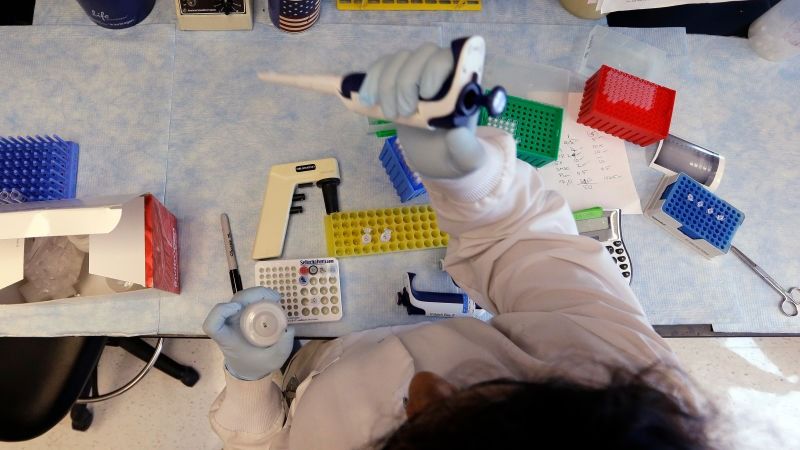Page 8871
Apr 12, 2018
A Global Arms Race for Killer Robots Is Transforming Warfare
Posted by Amnon H. Eden in categories: drones, government, information science, military, robotics/AI
We are now on the brink of a “third revolution in warfare,” heralded by killer robots — the fully autonomous weapons that could decide who to target and kill… without human input.
Over the weekend, experts on military artificial intelligence from more than 80 world governments converged on the U.N. offices in Geneva for the start of a week’s talks on autonomous weapons systems. Many of them fear that after gunpowder and nuclear weapons, we are now on the brink of a “third revolution in warfare,” heralded by killer robots — the fully autonomous weapons that could decide who to target and kill without human input. With autonomous technology already in development in several countries, the talks mark a crucial point for governments and activists who believe the U.N. should play a key role in regulating the technology.
The meeting comes at a critical juncture. In July, Kalashnikov, the main defense contractor of the Russian government, announced it was developing a weapon that uses neural networks to make “shoot-no shoot” decisions. In January 2017, the U.S. Department of Defense released a video showing an autonomous drone swarm of 103 individual robots successfully flying over California. Nobody was in control of the drones; their flight paths were choreographed in real-time by an advanced algorithm. The drones “are a collective organism, sharing one distributed brain for decision-making and adapting to each other like swarms in nature,” a spokesman said. The drones in the video were not weaponized — but the technology to do so is rapidly evolving.
Continue reading “A Global Arms Race for Killer Robots Is Transforming Warfare” »
Apr 12, 2018
Making custom qubits
Posted by Genevieve Klien in categories: computing, particle physics, quantum physics
For the first time, we’ve made a molecule by pressing two atoms together to make them bond on command. This could help build better qubits for quantum computers.
Apr 12, 2018
Scientists Create Beautiful Iridescent Material That Could Be Edible
Posted by Genevieve Klien in categories: food, physics
What makes something red, or blue, or green? It’s all in the way light bounces off its surface. Something that primarily reflects light with shorter wavelengths will appear bluer, while something that reflects longer wavelengths will appear redder. By playing around with that principle, scientists have created a material that, much like soap bubbles and certain insect wings, displays a gorgeous iridescence—a shifting rainbow of colors they can tweak with the same surface.
Even more interestingly, the researchers made this material from common cellulose, the simple stuff that makes up paper and which can be extracted from wood, cotton, or other renewable sources. We’ve already mentioned scientists arranging cellulose fibers in a way that makes them appear incredibly white. But now instead of laying fibers, a team of physicists are molding cellulose films with tiny, regularly spaced impressions (like an upside-down Lego piece).
The outcome was a thin, single-centimeter iridescent film that reflects light based on the spacing of the dots, according to the paper published recently in Nature Photonics.
Continue reading “Scientists Create Beautiful Iridescent Material That Could Be Edible” »
Apr 12, 2018
Trouble Detected in Infamous Dark Matter Signal
Posted by Genevieve Klien in category: cosmology
Apr 12, 2018
Scientists Edit Thousands of Genes at Once With Upgraded CRISPR
Posted by Genevieve Klien in categories: bioengineering, biotech/medical, genetics
When the gene-editing technology CRISPR first made a splash back in 2012, it foretold a future in which curing diseases might simply involve snipping out problematic bits of genetic code. Of course, innovation is rarely so straightforward. As incredible as CRISPR is, it also has some pretty sizable flaws to overcome before it can live up to its hype as a veritable cure-all for human disease.
A new study published this week in the journal Nature Genetics tackles one CRISPR complication. CRISPR gene-editing systems can easily cut many pieces of DNA at once, but actually editing all those genes is a lot more time-consuming. Now, scientists at UCLA have come up with a way to edit multiple genes at once.
When scientists use CRISPR for genetic engineering, they are really using a system made up of several parts. CRISPR is a tool taken from bacterial immune systems. When a virus invades, the bacterial immune system sends an enzyme like Cas9 to the virus and chops it up. The bacteria then adds short bits of virus DNA to its own code, so it can recognize that virus quickly in the future. If the virus shows up again, a guide RNA will lead the Cas9 enzyme to the matching place in the virus code, where it again chops it up. In CRISPR, when that cutting is done, scientists can also insert a new bit of code or delete code, to, for example, fix disease-causing genetic mutations in the code before patching it up. But delivering that new code and making the patch is where it can get especially tricky.
Continue reading “Scientists Edit Thousands of Genes at Once With Upgraded CRISPR” »
Apr 12, 2018
World’s first electrified road for charging vehicles opens in Sweden
Posted by Genevieve Klien in categories: energy, sustainability, transportation
Stretch of road outside Stockholm transfers energy from two tracks of rail in the road, recharging the batteries of electric cars and trucks.
Apr 12, 2018
Cancer: New drug may fight treatment resistance
Posted by Genevieve Klien in categories: biotech/medical, genetics
A new drug that blocks a molecule that cancer cells rely on for transcribing genetic information shows promise in tackling treatment-resistant tumors.
Very interesting.
Vostok (Russian for ‘East’) was a Soviet human spaceflight project that developed the Vostok spacecraft which was used to place the first human in space.
The first manned US spacecraft was Mercury, which was first launched in suborbital flights on Redstone rockets and then in orbital missions on Atlas launchers.
Apr 12, 2018
ARA Develops Lightweight Laser Weapon System
Posted by Klaus Baldauf in categories: drones, energy, military, space
ALBUQUERQUE, NM – Applied Research Associates, Inc. (ARA) is developing a compact, completely self-contained directed-energy weapon that is the first of its size and specifications, making it a standout from existing systems.
The Silent Saber is high power, 1.5 kilowatt fiber laser packaged in a backpack with power supplies and a unique thermal control system. A telescope with multiple potential mounting configurations can be mounted to existing Picatinny rails of a soldier’s rifle, and a laser is connected to the telescope by a fiber cable.
“This tool provides options to the warfighter to support explosive ordnance disposal, counter infrastructure and counter drone missions,” said Principal Engineer Joseph Paranto, ARA’s Director of Directed Energy Systems.


















